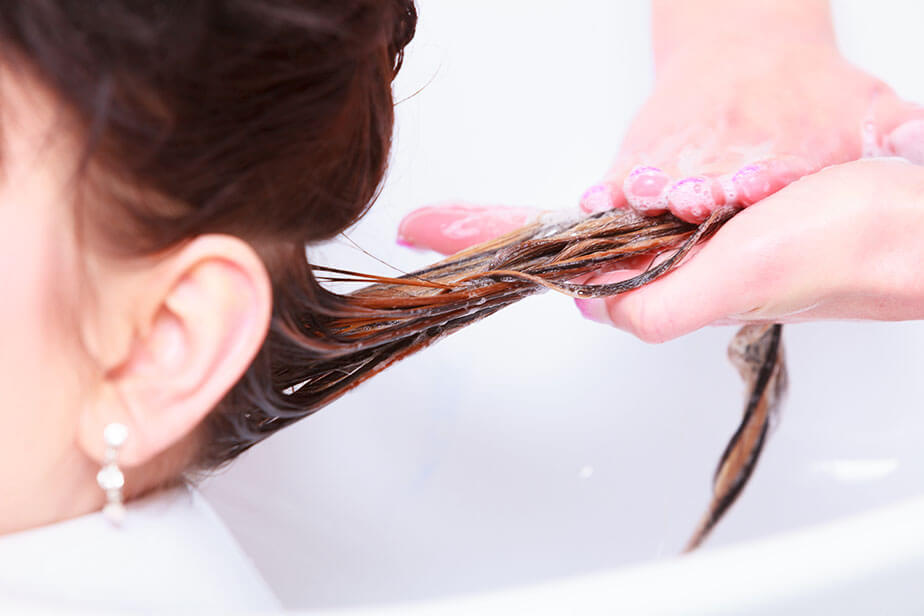Source: Voyagerix | Dreamstime.com
For stylists and clients alike, seeing vibrant hues fade quickly or bleed onto unwanted strands can be disheartening. While temporary color bleeding is inevitable, understanding the science empowers you to unlock longer-lasting results. With practice, you can transform frustration into satisfaction by leveraging professional semi-permanent hair color with strategic pre-coloring techniques and post-care rituals. Let’s take a look at the common culprits behind color bleeding and how to defeat them. By the end of this article, you’ll have a solid grasp on how to stop hair color from bleeding and deliver gorgeous, lasting results for your clients.
Why Hair Color Bleeds
Hair’s porosity is at the root of color bleeding, and porosity levels vary from one person to another. High-porosity hair with open cuticles readily absorbs color but struggles to retain it, leading to faster fading and potential bleeding. On the other hand, low-porosity hair’s tightly sealed cuticles resist color absorption, making it prone to patchy results and bleeding onto lighter strands.
Chemical processing further complicates the situation. Lightening opens the cuticle dramatically, potentially leading to uneven color uptake and subsequent bleeding. Likewise, perming alters the hair’s internal structure, impacting color absorption and increasing the likelihood of bleeding.
Beyond hair structure, color choices and product compatibility also play a role. Overlapping hues from previous color treatments can bleed into new applications, creating unintended colors. Using the wrong products, like harsh shampoos or non-color-safe stylers, can strip away color molecules, resulting in unwanted bleeding. With an understanding of what causes bleeding, you can adopt strategic solutions for achieving lasting color vibrancy.
Pre-Color Strategies

Source: Dragonimages | Dreamstime.com
Before wielding your color brush, determine the porosity of your client’s hair. This will reveal whether you’re dealing with thirsty, high-porosity strands or tightly sealed, low-porosity locks.
High-Porosity Hair
To achieve the most vibrant and long-lasting hair color, consider a two-pronged approach: pre-pigmentation and protein treatments. Pre-pigmentation fills in gaps in the hair’s structure, creating a smooth and even canvas for the color. This is particularly important for professional semi-permanent colors, as it helps ensure they stay true to tone and resist bleeding. Additionally, protein treatments strengthen the hair’s core and slightly close the cuticle, further improving color retention and minimizing bleeding.
Low-Porosity Hair
Forget about patchy results and uneven absorption with low-porosity hair! Start by washing your client’s hair with clarifying shampoo. This removes product buildup and slightly opens the hair’s cuticle, allowing color pigments to penetrate deeper and grip more effectively. Think of it as prepping the canvas for optimal paint adherence. Next, apply a touch of low heat with a blow dryer on a cool setting. This further lifts the cuticle, creating a welcoming gateway for color molecules to reach the hair’s core.
All Porosities
Regardless of porosity, a strand test is non-negotiable. Applying a small amount of the chosen color to a hidden section reveals potential issues like unwanted brassiness or bleeding, allowing for adjustments before full application.
Be mindful when choosing products. Using color-safe professional shampoos and conditioners is a must. These products cleanse gently without stripping away color molecules while nourishing ingredients strengthen the hair, creating a foundation for long-lasting vibrancy.
Tips to Prevent Bleeding
Lower the Water Temperature
Rinsing with hot water is one of the leading causes of color bleeding. After all, heat opens the hair cuticle, potentially releasing precious color molecules. Embrace cool water throughout the rinsing process to gently close the cuticle and trap the color molecules. This simple step makes a difference in color retention and minimizing bleeding.
Use a Gentle Touch
Treat the hair with care while applying and rinsing color. Avoid harsh scrubbing or excessive agitation, which can dislodge color molecules and lead to unwanted bleeding. Instead, employ gentle techniques and focus on even product distribution and thorough rinsing.
Pay Attention to Processing Time
Every professional hair color formula has a recommended processing time for ensuring optimal color uptake and minimal damage. Ignoring these guidelines can lead to over-processing, which opens the cuticle excessively and increases the risk of bleeding. Adhering to the specified processing time ensures beautiful, long-lasting color without compromising hair health.

Source: Ihor Bulyhin | Dreamstime.com
Wrapping Up
Combating color bleeding isn’t a one-time battle but a strategic war fought on multiple fronts, and getting good at it takes practice. By understanding hair porosity, employing pre-color techniques and mastering coloring techniques, you develop the knowledge and skills to deliver gorgeous, long-lasting results that will keep your clients coming back for more. Happy coloring!










Share Your Feedback